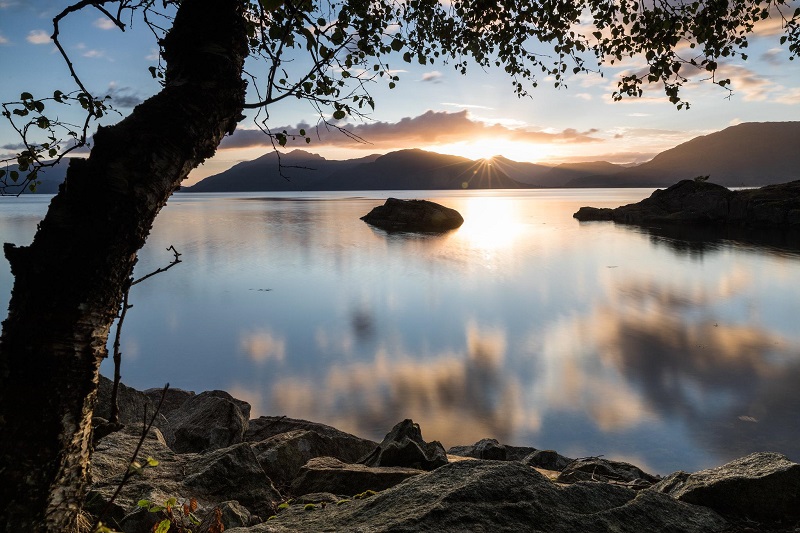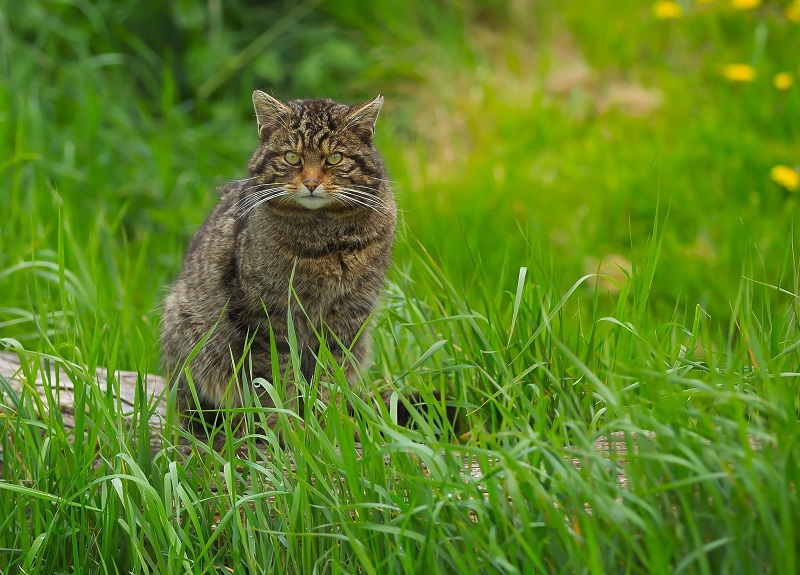Picture Perfect
Stretching over 50 kilometres long, Loch Linnhe is a large sea loch in the west coast of Scotland. Following the line of the Great Glen Fault, it forges a path inland, eventually striking the heart of the highlands. The northeast end of the loch lies just south of the town of Fort William and the loch itself is known for its beautiful scenery. The glassy waters are surrounded on both sides by extensive areas of native pine forests, mountain ranges and winding glens. The area therefore offers fantastic views, especially on days where the weather is still, and visitors can be assured a landscape that is in many ways the authentic Scottish experience.

Towards the northern end of the lake, Loch Linnhe meets the famous Glen Coe – noted for its spectacular landscapes and rugged mountains. It is also possible to get views of Scotland’s highest mountain, Ben Nevis, from here. With such diversity of habitats, the area in and around Loch Linnhe is an excellent place to see wildlife and there are several rare species to be found here, along with the traditionally more common cast of Scottish wildlife. With the added opportunity to take wildlife cruises on the loch during the tourist season, Loch Linnhe is a perfect place for adventurers and animal lovers alike.
The Highland Tiger
With the landscape surrounding Loch Linnhe being wild, remote and blessed by little human disturbance, the area is home to what is by far Scotland’s most elusive species. Known poetically as the highland tiger, the Scottish Wildcat is a small carnivore that is only found in the Highlands of Scotland, having been hunted to extinction in other parts of the United Kingdom. It is critically endangered and is sometimes considered the holy grail of Scottish wildlife.

The species is slightly larger than the average domestic cat and can be identified by its tabby-like fur with distinctive black stripes. Scottish Wildcats are primarily active at night, although they will also be seen around dawn and dusk. They prey on small mammals such as rabbits and voles and prefer to hunt in forested, remote areas that are away from human settlements. Sadly, the population is very low and the future for this animal is uncertain, so opportunities to see this enchanting creature in the wild might not be around for much longer. But even if you’re not lucky enough to see a wildcat, just knowing it’s somewhere out there in the Loch Linnhe forests can make a visit magical enough. Top tip for spotting Scottish Wildcats around Loch Linnhe: take a walk early in the morning and aim for areas of forest on hill slopes.
Spoilt for Choice
Although the highland tiger might elude the majority of visitors to Loch Linnhe, there is a wealth of other wildlife highlights to enjoy, many of which are sighted far more often. To enjoy the loch at its fullest, take advantage of the boat cruises that run from Fort William. This will take you alongside Seal Island – a small rock in the loch where seals can often be seen resting out of the water. The cruise is also a great opportunity to see Harbour Porpoises and Bottlenose Dolphins, both of which are present in the loch. Overhead, keep an eye out for birds of prey such as Ospreys and White-Tailed Sea Eagles, as these birds can be seen fishing in the area. Other birdwatching highlights include guillemots, mergansers and eider ducks.
The Loch Linnhe area is also great for coastal walks and mountaineering exploits. Both can be excellent ways to see wildlife. In the mountains, Red Deer and Golden Eagles are always species to be on the lookout for and, lower down the slopes, Red Squirrels can be seen in forested areas. The pine forests are also great habitat for the Scottish Crossbill – Scotland’s only endemic bird species. Loch Linnhe is therefore a prime location for wildlife watching, combining fantastic scenery with great walking opportunities.
